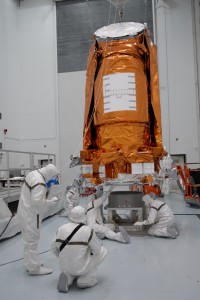The rocky, desert-like planet Tatooine is a staple of science fiction lore. Star Wars aficionados know it as the birthplace of Anakin and Luke Skywalker, but to astronomers, Tatooine is also famous for its binary star system. Since the original trilogy, this peculiar planet has begged the question — could a system with two or three stars nourish the same richness and diversity of planets as our own? New research from Professor Debra Fischer, Yale Professor of Astronomy, suggests otherwise. According to her paper published in the February issue of The Astrophysics Journal, stellar multiplicity, the presence of two or more stars in one system, may suppress planet formation.

In order to study the effects of stellar multiplicity on planet formation, the researchers set out to find multiple-star systems by first identifying stars with planets, and then searching for companion stars bound together by the attractive force of gravity. Previous research on multiple-star systems focused on one of two methods of looking for stellar companions. The first, adaptive optics, uses telescopes to take high-resolution images of the stars. Just as glasses correct for astigmatism, adaptive optics correct for the turbulence of Earth’s atmosphere. The second technique utilizes the Doppler effect to analyze small shifts in the central star’s spectrum. “If a star wobbles,” explained postdoctoral associate and lead author Ji Wang, “you see a shift in its spectrum, which you can use to search for stellar companions.” Though both techniques are effective, neither one alone provides results that are incontrovertible.
Because previous searches for multiple-star systems only used either adaptive optics or Doppler analysis, they were subject to incompleteness, making their results inconclusive. In this breakthrough paper, the Yale researchers eliminated the incompleteness by combining both methodologies. As Wang put it, “These two techniques are complementary to each other. Together, they allow for a complete survey of stellar companions.” In addition, Wang invented a third technique, called dynamic analysis, which distinguishes multiple-star from single-star systems based on the orbits of planets in the system.
With this versatile combination of techniques, the team was able to determine that in a multi-star system, the probability of planet formation is reduced. “So far the data we have cannot tell us how much, but there is a qualitative difference, and it is significant,” he said.

“We now believe,” Wang added, “that planets form when gravitational effects cause solid materials in gaseous disks to collide and stick together, becoming an embryo. If the embryo is massive enough, it forms a gaseous planet. Otherwise, it becomes a terrestrial planet.” If this picture of planet formation holds true, then the presence of a second star could prevent planet formation in a variety of ways. Disk truncation, where the gaseous disk is pruned, and disk perturbation, in which the companion star makes it harder for the materials to congeal into an embryo, are just a few possibilities. A second star could also cause high eccentricities in the planet’s orbit, disrupting its revolution and causing it to be ejected from the stellar system.
This stellar finding could impact humanity’s ongoing quest for terrestrial planets. Using sophisticated tools such as the Kepler space telescope, astronomers are currently engaged in a wide-ranging search for an Earth-like planet. But, as Wang cautioned, “In the process, how are we going to select targets? This study shows that if you really want to increase the probability of finding another Earth, maybe single star systems are a better bet than multiple star systems.” Although Star Wars stalwarts may treasure the idea of Tatooine, it may well be that the solar system of the closest inhabitable planet has but one sun.
